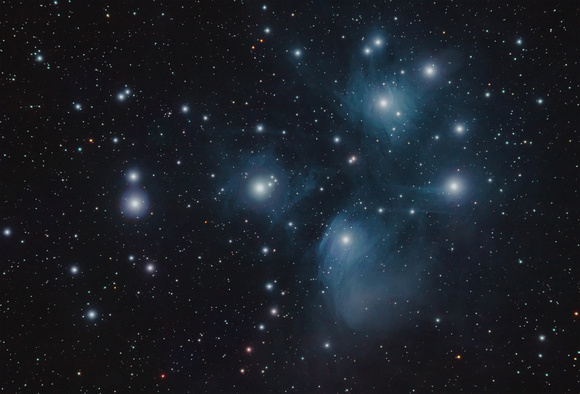Date: 11/08/2010
Target: M45 - The Pleiades
Telescope: Vixen ED80Sf, WO 0.8x FR
Camera: Canon 40D (modified)
Filter: IDAS
Exposures: 44x300s (3.7h) @ ISO800
Framing: North is Up, 68% crop
Location: Mocksville, NC
Seeing: 2/5
Transparency: 5/5
Start Time: 9:00PM
End Time: 5:00AM
Captured with Nebulosity, stacked using DeepSkyStacker, processed in Photoshop.
Anacortes Telescope Picture of the Day, November 14, 2010.In
astronomy, the
Pleiades, or seven sisters, (
Messier object 45) are an
open star cluster containing relatively young hot
blue stars located in the constellation of
Taurus. It is among the nearest
star clusters to Earth and is the cluster most obvious to the
naked eye in the
night sky. Pleiades has several
meanings in different cultures and traditions.
The cluster is dominated by hot
blue stars that have formed within the last 100 million years. Dust that forms a faint
reflection nebulosity around the brightest stars was thought at first to be left over from the formation of the cluster (hence the alternate name
Maia Nebula after the star
Maia), but is now known to be an unrelated dust cloud in the
interstellar medium that the stars are currently passing through. Astronomers estimate that the cluster will survive for about another 250 million years, after which it will disperse due to gravitational interactions with its galactic neighborhood.


